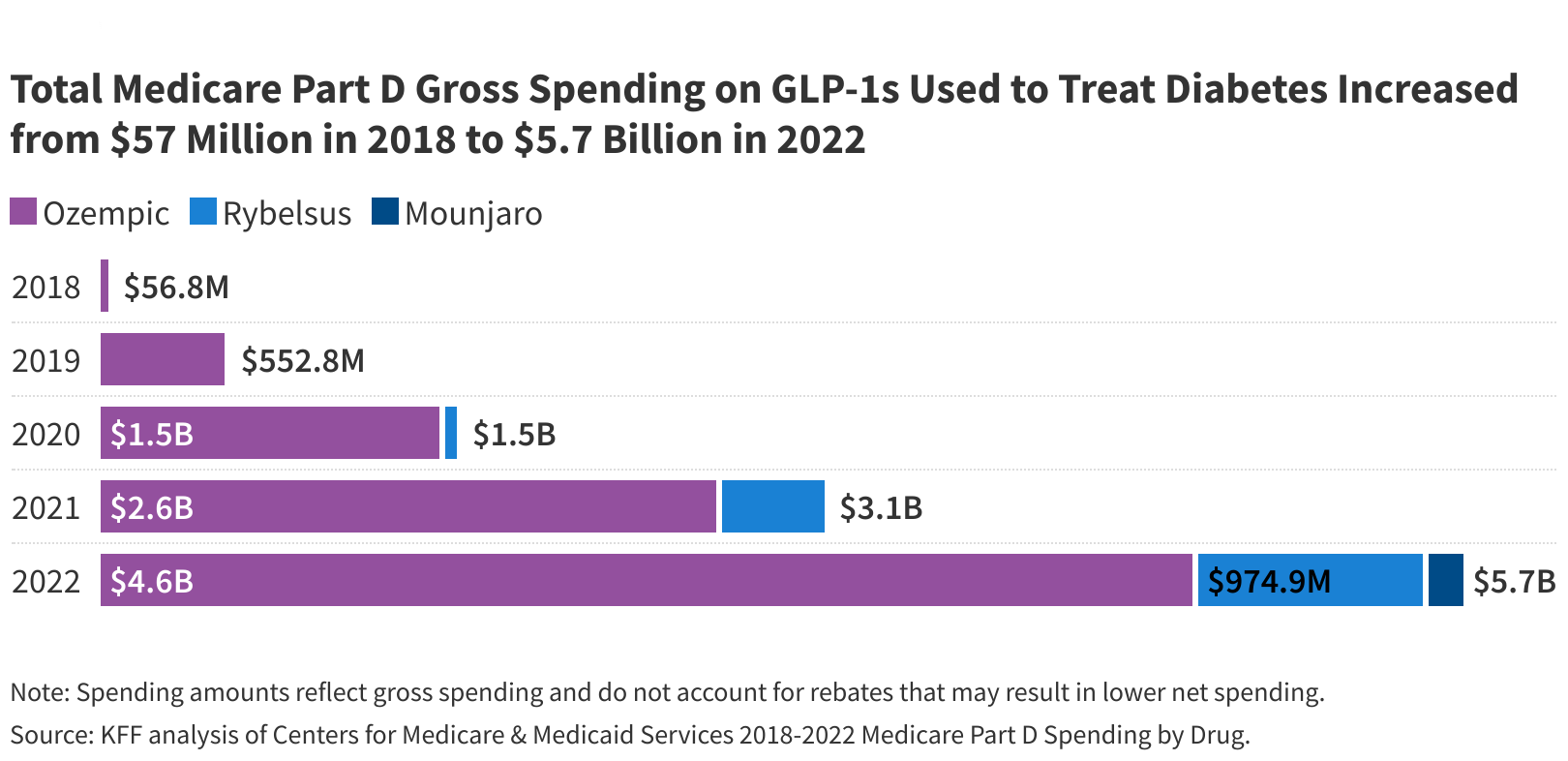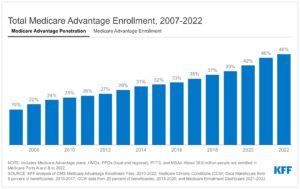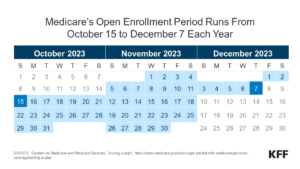GLP-1 drugs such as Ozempic, Wegovy, and Mounjaro were initially developed to treat type 2 diabetes, but their effectiveness as anti-obesity medications has generated tremendous excitement and high demand among people who have struggled to lose weight by other means. These drugs are also being tested to treat other conditions, and the FDA has just approved a new use for Wegovy to reduce the risk of adverse cardiovascular events. But the annual cost of these drugs in the US – upwards of $11,000 at recent list prices, though net prices may be lower with rebates negotiated by pharmacy benefit managers – has raised concerns about the fiscal impact of broad coverage of GLP-1 drugs on Medicare, other health insurers, and patients.
Medicare is prohibited under current law from covering drugs used for weight loss, but Medicare Part D plans can cover GLP-1s for their other medically-accepted indications, including to treat diabetes, and now to cut cardiovascular risk based on a recent memo from the Centers for Medicare & Medicaid Services (CMS). While the potential cost of authorizing Medicare coverage of anti-obesity drugs has presented a barrier to enacting legislation to lift the prohibition, covering these drugs under Medicare for authorized uses has already catapulted these drugs to rank among the top-selling drugs covered by Part D, Medicare’s outpatient drug benefit program.
KFF’s analysis of newly released Medicare Part D spending data from CMS shows that total gross Medicare spending on these medications has skyrocketed in recent years, rising from $57 million in 2018 to $5.7 billion in 2022 (Figure 1). (Gross spending does not account for rebates that would result in lower net spending.) As of 2022, Part D covered three GLP-1s for diabetes: Ozempic (semaglutide injection), approved in December 2017; Rybelsus (semaglutide tablets), approved in September 2019; and Mounjaro (tirzepatide) approved in May 2022.
Spending on Ozempic alone increased substantially between 2021 and 2022. Ozempic rose from a 10th place ranking among the 10 top-selling Part D drugs in 2021, with gross spending of $2.6 billion, to 6th place in 2022, with spending of $4.6 billion (Figure 2). In total, gross spending under Medicare Part D was $240 billion in 2022; Ozempic accounted for 2% of this amount.
Given the relatively high level of gross Medicare Part D spending as of 2022 for the two semaglutide products combined, Ozempic and Rybelsus, it’s possible that Medicare could select this product for drug price negotiation as early as 2025, which would be just over seven years past its earliest FDA approval in late 2017. (For small-molecule drugs like semaglutide, at least seven years must have passed from its FDA approval date to be eligible for selection, and for drugs with multiple FDA approvals, CMS will use the earliest approval date to make this determination.) If that happens, a negotiated Medicare price would be available beginning in 2027. This could lower total Medicare spending on semaglutide products, including Ozempic, Rybelsus, and Wegovy.
The fact that covering GLP-1s under Medicare Part D for authorized uses is already making a mark on total Part D program spending could be a sign of even higher spending to come as Part D plans are now able to cover Wegovy for its heart health benefits, if other uses for GLP-1s are approved, and as policymakers consider legislation that would authorize Medicare to cover obesity drugs. Competition among GLP-1 drugs could have a moderating effect on launch prices and lead to higher rebates negotiated between manufacturers and pharmacy benefit managers. These drugs offer substantial potential health benefits, but the combination of intense demand, new uses, and high prices for these treatments is likely to place tremendous pressure on Medicare spending, Part D plan costs, and premiums for Part D coverage.







